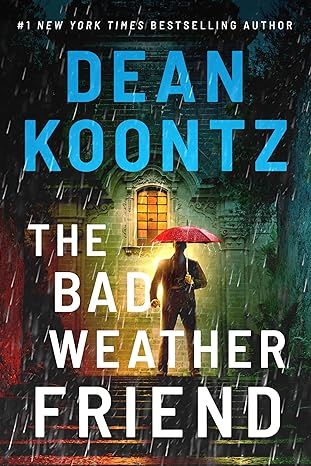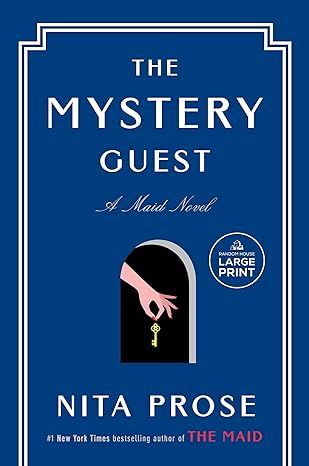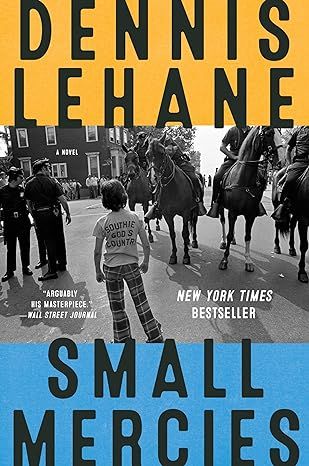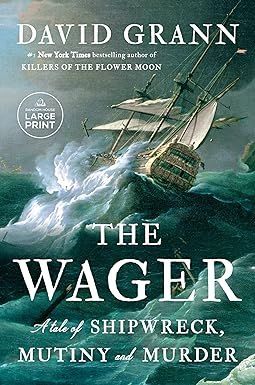The Wager: A Tale of Shipwreck, Mutiny and Murder (Random House Large Print)
4.5
-
28,672 ratings
From the #1 New York Times bestselling author of Killers of the Flower Moon and The Lost City of Z, a mesmerizing story of shipwreck, survival, and savagery, culminating in a court martial that reveals a shocking truth
On January 28, 1742, a ramshackle vessel of patched-together wood and cloth washed up on the coast of Brazil. Inside were thirty emaciated men, barely alive, and they had an extraordinary tale to tell. They were survivors of His Majesty’s Ship the Wager, a British vessel that had left England in 1740 on a secret mission during an imperial war with Spain. While the Wager had been chasing a Spanish treasure-filled galleon known as “the prize of all the oceans,” it had wrecked on a desolate island off the coast of Patagonia. The men, after being marooned for months and facing starvation, built the flimsy craft and sailed for more than a hundred days, traversing 2500 miles of storm-wracked seas. They were greeted as heroes.
But then ... six months later, another, even more decrepit craft landed on the coast of Chile. This boat contained just three castaways, and they had a very different story to tell. The thirty sailors who landed in Brazil were not heroes – they were mutineers. The first group responded with countercharges of their own, of a tyrannical and murderous captain and his henchmen. It became clear that while stranded on the island the crew had fallen into anarchy, with warring factions fighting for dominion over the barren wilderness. As accusations of treachery and murder flew, the Admiralty convened a court martial to determine who was telling the truth. The stakes were life-and-death—for whomever the court found guilty could hang.
The Wager is a grand tale of human behavior at the extremes told by one of our greatest nonfiction writers. Grann’s recreation of the hidden world on a British warship rivals the work of Patrick O’Brian, his portrayal of the castaways’ desperate straits stands up to the classics of survival writing such as The Endurance, and his account of the court martial has the savvy of a Scott Turow thriller. As always with Grann’s work, the incredible twists of the narrative hold the reader spellbound. Most powerfully, he unearths the deeper meaning of the events, showing that it was not only the Wager’s captain and crew who were on trial – it was the very idea of empire.
Kindle
$14.99
Available instantly
Audiobook
$0.00
with membership trial
Hardcover
$17.84
Paperback
$17.89
Ships from
Amazon.com
Payment
Secure transaction
ISBN-10
0593678257
ISBN-13
978-0593678251
Print length
528 pages
Language
English
Publisher
Random House Large Print
Publication date
April 17, 2023
Dimensions
6.12 x 0.91 x 9.2 inches
Item weight
1.09 pounds
Popular Highlights in this book
To “turn a blind eye” became a popular expression after Vice-Admiral Nelson deliberately placed his telescope against his blind eye to ignore his superior’s signal flag to retreat.
Highlighted by 5,077 Kindle readers
Constructing a single large warship could require as many as four thousand trees; a hundred acres of forest might be felled.
Highlighted by 3,034 Kindle readers
Product details
ASIN :
B0B6Z4SVTH
File size :
63844 KB
Text-to-speech :
Enabled
Screen reader :
Supported
Enhanced typesetting :
Enabled
X-Ray :
Enabled
Word wise :
Enabled
Editorial Reviews
#1 NEW YORK TIMES BESTSELLER
A Best Book of the Year: The New York Times, The Wall Street Journal, The Washington Post, TIME, NPR, Esquire, BookPage
“The most gripping sea-yarn I’ve read in years….A tour de force of narrative nonfiction. Mr. Grann’s account show how storytelling, whether to judges or readers, can shape individual and national fortunes – as well as our collective memories.” — Wall Street Journal
“Glorious, steely…a tightly written, relentless, blow-by-blow account that is hard to put down”— The Washington Post
“As much a rousing adventure as an exploration of the power of narratives to shape our perception of reality.” — The New York Times
“Propulsive….finely-detailed…a ripping yarn…remarkable.” — The Boston Globe
“David Grann's latest work of narrative nonfiction, The Wager, is part Robinson Crusoe, part Lord of the Flies... Gripping”—Maureen Corrigan, NPR (Top 10 Book of 2023)
“Riveting...The Wager reads like a thriller, tackling a multilayered history—and imperialism—with gusto.” — Time Magazine
“The beauty of The Wager unfurls like a great sail…He fixes his spyglass on the ravages of empire, of racism, of bureaucratic indifference and raw greed…one of the finest nonfiction books I’ve ever read.” — The Guardian (UK)
“The story of the shipwreck and its aftermath features scenery-chewing characters, unexpected twists and an almost unimaginable amount of human misery. Grann, the author of the acclaimed “Killers of the Flower Moon,” tells it with style. He manages to wring maximum drama out of the events and sketch out nuanced portraits of key players on the doomed ship." — Associated Press
“His dogged search through ships’ logs and other contemporaneous accounts of the disaster and its mutinous aftermath has turned up the kind of sterling details that make his writing sing; he is also interested in the way these events were recorded and then recounted, with many different people trying to shape the memory of what happened. Grann simultaneously reconstructs history while telling a tale that is as propulsive and adventure-filled as any potboiler.” — The Atlantic
"A genre-defying literary naval-history thriller, part Master and Commander, part Lord of the Flies" — Vanity Fair
"One of our finest nonfiction storytellers returns with a swashbuckling epic about shipwreck, scandal, mutiny, and murder" — Esquire
“A thrilling account…dramatic and engrossing.” — The Economist
“This astonishing tale of maritime warfare, mutiny and survival in the 18th-century Atlantic proves that a nonfiction book can be as thrilling as any summer blockbuster.” — People
"The Wager" is a soaring literary accomplishment and seductive adventure tale… enthralling, seamlessly crafted… ‘The Wager’ then, is an accomplishment as vividly realized and ingeniously constructed as Grann's previous work, on par with Jon Krakauer's Into Thin Air and Sebastian Junger's The Perfect Storm. Welcome a classic.” — Minneapolis Star Tribune
“Gripping … Combining impeccable research with exceptional storytelling powers, [Grann] spirits the reader aboard a creaking wooden ship trapped at the eye of a howling storm… No book that you’re likely to read either this year or next will prove more dramatic and enthralling than Grann’s magnificent story of life both at sea and out on the desolate, mist-laden island whose solitary peak the Wager’s unfortunate crew aptly named Mount Misery”— Financial Times
“A masterclass in story-telling…With a series of twists and turns worthy of a well-plotted thriller, the author of ‘Killers of the Flower Moon,’ uncovers an epic sea-faring tale…Epic true story as told by a master… David Grann has produced this riveting book…with the artistry of a superb novelist.” — The Toronto Star
“[Grann’s] meticulously researched stories, with their spare, simmering setups that almost always deliver stunning payoffs, have made him one of the preeminent adventure and true-crime writers working today…[Grann] has mastered a streamlined, propulsive type of narrative that readers devour for its hide-and-seek reveals…David’s stuff reads like literature, but every detail, every quote, every seemingly implausible glimpse into a subject’s mind is accounted for” — New York Magazine
Sample
Chapter 1
The First Lieutenant
Each man in the squadron carried, along with a sea chest, his own burdensome story. Perhaps it was of a scorned love, or a secret prison conviction, or a pregnant wife left on shore weeping. Perhaps it was a hunger for fame and fortune, or a dread of death. David Cheap, the first lieutenant of the Centurion, the squadron’s flagship, was no different. A burly Scotsman in his early forties with a protracted nose and intense eyes, he was in flight—from squabbles with his brother over their inheritance, from creditors chasing him, from debts that made it impossible for him to find a suitable bride. Onshore, Cheap seemed doomed, unable to navigate past life’s unexpected shoals. Yet as he perched on the quarterdeck of a British man-of-war, cruising the vast oceans with a cocked hat and spyglass, he brimmed with confidence—even, some would say, a touch of haughtiness. The wooden world of a ship—a world bound by the Navy’s rigid regulations and the laws of the sea and, most of all, by the hardened fellowship of men—had provided him a refuge. Suddenly he felt a crystalline order, a clarity of purpose. And Cheap’s newest posting, despite the innumerable risks that it carried, from plagues and drowning to enemy cannon fire, offered what he longed for: a chance to finally claim a wealthy prize and rise to captain his own ship, becoming a lord of the sea.
The problem was that he could not get away from the damned land. He was trapped—cursed, really—at the dockyard in Portsmouth, along the English Channel, struggling with feverish futility to get the Centurion fitted out and ready to sail. Its massive wooden hull, 144 feet long and 40 feet wide, was moored at a slip. Carpenters, caulkers, riggers, and joiners combed over its decks like rats (which were also plentiful). A cacophony of hammers and saws. The cobblestone streets past the shipyard were congested with rattling wheelbarrows and horse-drawn wagons, with porters, peddlers, pickpockets, sailors, and prostitutes. Periodically, a boatswain blew a chilling whistle, and crewmen stumbled from ale shops, parting from old or new sweethearts, hurrying to their departing ships in order to avoid their officers’ lashes.
It was January 1740, and the British Empire was racing to mobilize for war against its imperial rival Spain. And in a move that had suddenly raised Cheap’s prospects, the captain under whom he served on the Centurion, George Anson, had been plucked by the Admiralty to be a commodore and lead the squadron of five warships against the Spanish. The promotion was unexpected. As the son of an obscure country squire, Anson did not wield the level of patronage, the grease—or “interest,” as it was more politely called—that propelled many officers up the pole, along with their men. Anson, then forty-two, had joined the Navy at the age of fourteen, and served for nearly three decades without leading a major military campaign or snaring a lucrative prize.
Tall, with a long face and a high forehead, he had a remoteness about him. His blue eyes were inscrutable, and outside the company of a few trusted friends he rarely opened his mouth. One statesman, after meeting with him, noted, “Anson, as usual, said little.” Anson corresponded even more sparingly, as if he doubted the ability of words to convey what he saw or felt. “He loved reading little, and writing, or dictating his own letters less, and that seeming negligence . . . drew upon him the ill will of many,” a relative wrote. A diplomat later quipped that Anson was so unknowing about the world that he’d been “round it, but never in it.”
Nevertheless, the Admiralty had recognized in Anson what Cheap had also seen in him in the two years since he’d joined the Centurion’s crew: a formidable seaman. Anson had a mastery of the wooden world and, equally important, a mastery of himself—he remained cool and steady under duress. His relative noted, “He had high notions of sincerity and honor and practiced them without deviation.” In addition to Cheap, he had attracted a coterie of talented junior officers and protégés, all vying for his favor. One later informed Anson that he was more obliged to him than to his own father and would do anything to “act up to the good opinion you are pleased to have of me.” If Anson succeeded in his new role as commodore of the squadron, he would be in a position to anoint any captain he wanted. And Cheap, who’d initially served as Anson’s second lieutenant, was now his right-hand man.
Like Anson, Cheap had spent much of his life at sea, a bruising existence he’d at first hoped to escape. As Samuel Johnson once observed, “No man will be a sailor who has contrivance enough to get himself into a jail; for being in a ship is being in a jail, with the chance of being drowned.” Cheap’s father had possessed a large estate in Fife, Scotland, and one of those titles—the second Laird of Rossie—that evoked nobility even if it did not quite confer it. His motto, emblazoned on the family’s crest, was Ditat virtus: “Virtue enriches.” He had seven children with his first wife, and, after she died, he had six more with his second, among them David.
In 1705, the year that David celebrated his eighth birthday, his father stepped out to fetch some goat’s milk and dropped dead. As was custom, it was the oldest male heir—David’s half brother James—who inherited the bulk of the estate. And so David was buffeted by forces beyond his control, in a world divided between first sons and younger sons, between haves and have-nots. Compounding his upheaval, James, now ensconced as the third Laird of Rossie, frequently neglected to pay the allowance that had been bequeathed to his half brothers and half sister: some blood was apparently thicker than others’. Driven to find work, David apprenticed to a merchant, but his debts mounted. So in 1714, the year he turned seventeen, he ran off to sea, a decision that was evidently welcomed by his family—as his guardian wrote to his older brother, “The sooner he goes off it will be better for you and me.”
After these setbacks, Cheap seemed only more consumed by his festering dreams, more determined to bend what he called an “unhappy fate.” On his own, on an ocean distant from the world he knew, he might prove himself in elemental struggles—braving typhoons, outdueling enemy ships, rescuing his companions from calamities.
But though Cheap had chased a few pirates—including the one-handed Irishman Henry Johnson, who fired his gun by resting the barrel on his stump—these earlier voyages had proved largely uneventful. He’d been sent to patrol the West Indies, generally considered the worst assignment in the Navy because of the specter of disease. The Saffron Scourge. The Bloody Flux. The Breakbone Fever. The Blue Death.
But Cheap had endured. Wasn’t there something to be said for that? Moreover, he’d earned the trust of Anson and worked his way up to first lieutenant. No doubt it helped that they shared a disdain for reckless banter, or what Cheap deemed a “vaporing manner.” A Scottish minister who later became close to Cheap noted that Anson had employed him because he was “a man of sense and knowledge.” Cheap, the once-forlorn debtor, was but one rung from his coveted captaincy. And with the war with Spain having broken out, he was about to head into full-fledged battle for the first time.
The conflict was the result of the endless jockeying among the European powers to expand their empires. They each vied to conquer or control ever larger swaths of the earth, so that they could exploit and monopolize other nations’ valuable natural resources and trade markets. In the process, they subjugated and destroyed innumerable indigenous peoples, justifying their ruthless self-interest—including the reliance on the ever-expanding Atlantic slave trade—by claiming that they were somehow spreading “civilization” to the benighted realms of the earth. Spain had long been the dominant empire in Latin America, but Great Britain, which already possessed colonies along the American eastern seaboard, was now on the ascendance—and determined to break its rival’s hold.
Then, in 1738, Robert Jenkins, a British merchant captain, was summoned to appear in Parliament, where he reportedly claimed that a Spanish officer had stormed his brig in the Caribbean and, accusing him of smuggling sugar from Spain’s colonies, cut off his left ear. Jenkins reputedly displayed his severed appendage, pickled in a jar, and pledged “my cause to my country.” The incident further ignited the passions of Parliament and pamphleteers, leading people to cry for blood—an ear for an ear—and a good deal of booty as well. The conflict became known as the War of Jenkins’ Ear.
British authorities soon devised a plan to launch an attack on a hub of Spain’s colonial wealth: Cartagena. A South American city on the Caribbean, it was where much of the silver extracted from Peruvian mines was shipped in armed convoys to Spain. The British offensive—involving a massive fleet of 186 ships, led by Admiral Edward Vernon—would be the largest amphibious assault in history. But there was also another, much smaller operation: the one assigned to Commodore Anson.
With five warships and a scouting sloop, he and some two thousand men would sail across the Atlantic and round Cape Horn, “taking, sinking, burning, or otherwise destroying” enemy ships and weakening Spanish holdings from the Pacific coast of South America to the Philippines. The British government, in concocting its scheme, wanted to avoid the impression that it was merely sponsoring piracy. Yet the heart of the plan called for an act of outright thievery: to snatch a Spanish galleon loaded with virgin silver and hundreds of thousands of silver coins. Twice a year, Spain sent such a galleon—it was not always the same ship—from Mexico to the Philippines to purchase silks and spices and other Asian commodities, which, in turn, were sold in Europe and the Americas. These exchanges provided crucial links in Spain’s global trading empire.
Cheap and the others ordered to carry out the mission were rarely privy to the agendas of those in power, but they were lured by a tantalizing prospect: a share of the treasure. The Centurion’s twenty-two-year-old chaplain, Reverend Richard Walter, who later compiled an account of the voyage, described the galleon as “the most desirable prize that was to be met with in any part of the globe.”
If Anson and his men prevailed—“if it shall please God to bless our arms,” as the Admiralty put it—they would continue circling the earth before returning home. The Admiralty had given Anson a code and a cipher to use for his written communication, and an official warned that the mission must be carried out in the “most secret, expeditious manner.” Otherwise, Anson’s squadron might be intercepted and destroyed by a large Spanish armada being assembled under the command of Don José Pizarro.
Cheap was facing his longest expedition—he might be gone for three years—and his most perilous. But he saw himself as a knight-errant of the sea in search of “the greatest prize of all the oceans.” And along the way, he might become a captain yet.
Yet if the squadron didn’t embark quickly, Cheap feared, the entire party would be annihilated by a force even more dangerous than the Spanish armada: the violent seas around Cape Horn. Only a few British sailors had successfully made this passage, where winds routinely blow at gale force, waves can climb to nearly a hundred feet, and icebergs lurk in the hollows. Seamen thought that the best chance to survive was during the austral summer, between December and February. Reverend Walter cited this “essential maxim,” explaining that during winter not only were the seas fiercer and the temperatures freezing; there were fewer hours of daylight in which one could discern the uncharted coastline. All these reasons, he argued, would make navigating around this unknown shore the “most dismaying and terrible.”
But since war had been declared, in October 1739, the Centurion and the other men-of-war in the squadron—including the Gloucester, the Pearl, and the Severn—had been marooned in England, waiting to be repaired and fitted out for the next journey. Cheap watched helplessly as the days ticked by. January 1740 came and went. Then February and March. It was nearly half a year since the war with Spain had been declared; still, the squadron was not ready to sail.
It should have been an imposing force. Men-of-war were among the most sophisticated machines yet conceived: buoyant wooden castles powered across oceans by wind and sail. Reflecting the dual nature of their creators, they were devised to be both murderous instruments and the homes in which hundreds of sailors lived together as a family. In a lethal, floating chess game, these pieces were deployed around the globe to achieve what Sir Walter Raleigh had envisioned: “Whosoever commands the seas commands the trade of the world; whosoever commands the trade of the world commands the riches of the world.”
Cheap knew what a cracking ship the Centurion was. Swift and stout, and weighing about a thousand tons, she had, like the other warships in Anson’s squadron, three towering masts with crisscrossing yards—wooden spars from which the sails unfurled. The Centurion could fly as many as eighteen sails at a time. Its hull gleamed with varnish, and painted around the stern, in gold relief, were Greek mythological figures, including Poseidon. On the bow rode a sixteen-foot wooden carving of a lion, painted bright red. To increase the chances of surviving a barrage of cannonballs, the hull had a double layer of planks, giving it a thickness of more than a foot in places. The ship had several decks, each stacked upon the next, and two of them had rows of cannons on both sides—their menacing black muzzles pointing out of square gunports. Augustus Keppel, a fifteen-year-old midshipman who was one of Anson’s protégés, boasted that other men-of-war had “no chance in the world” against the mighty Centurion.
Yet building, repairing, and fitting out these watercraft was a herculean endeavor even in the best of times, and in a period of war it was chaos. The royal dockyards, which were among the largest manufacturing sites in the world, were overwhelmed with ships—leaking ships, half-constructed ships, ships needing to be loaded and unloaded. Anson’s vessels were laid up on what was known as Rotten Row. As sophisticated as men-of-war were with their sail propulsion and lethal gunnery, they were largely made from simple, perishable materials: hemp, canvas, and, most of all, timber. Constructing a single large warship could require as many as four thousand trees; a hundred acres of forest might be felled.
Read more
About the authors
David Grann
DAVID GRANN is a #1 New York Times bestselling author and a staff writer at The New Yorker magazine. He is the author of the critically acclaimed books "The Wager," "The Lost City of Z," and "Killers of the Flower Moon," which was a finalist for the National Book Award. He is also the author of "The White Darkness" and the collection "The Devil and Sherlock Holmes: Tales of Murder, Madness, and Obsession." His book "Killers of the Flower Moon" was recently adapted into a film directed by Martin Scorsese and starring Leonardo DiCaprio, Lily Gladstone, and Robert De Niro. Several of his other stories, including "The Lost City of Z" and "Old Man and the Gun," have also been adapted into major motion pictures. His investigative reporting and storytelling have garnered several honors, including a George Polk Award and an Edgar Allan Poe Award.
Read more
Reviews
Customer reviews
4.5 out of 5
28,672 global ratings
Cramedog
5
David Grann Wrote A BigDog Book!
Reviewed in the United States on October 1, 2023
Verified Purchase
I absolutely loved The Wager. As my headline suggests, I consider this to be a BigDog book. What constitutes a "BigDog" book? It has to be the right combination of Information, Amusement and Never Being Able to Put it Down. David Grann did all three at a very high level. I think I love this guy, David Grann. He must have worked so damn hard on this book. The amount of scribbles and scrabbles he was probably trying to decipher from these dumb 250 year old ship logs! It must have been so tedious.
But Grann did it. He went to work and researched the tits out of this story. And sure, there are certainly holes he must have approached in the story and realized that he would have to creatively fill those in. That, in my opinion, is to be expected. Not only did Grann fill those holes, he did it expertly and seamlessly. Do YOU know why we have the phrase "3 Sheets To the Wind" as a euphemism for being drunk? Well, throughout this history of the British man-o-wars, David Grann teaches you that there's more to being a shipman than knowing a few knots & phrases. It takes guts and sometimes, even honor.
I won't spoil the story for you here. I believe the Amazon description above gives you even too much information and "spoils" as the kids say. Speaking of kids, my 14 year old son was watching me devour this book. He was the only one in my family willing to listen to the new things I'd learned about man-o-wars or ancient tribes while we all gathered at the dinner table. "Did you know that the British Navy could just roll up on homies who had abandoned their ships and pretended to be dead so they didn't have to go back to sea? They called these guys 'Press Gangs.'" Only my 14 year old would chirp up and say something positive like, "That's awesome, dad!" Or "Do you think you could be a seaman, dad?" What a nice boy.
One day while I was cranking through the part of the book near the end that is sort of the political intrigue portion, my son said "David Grann."
"What?" I asked.
"David Grann. The author." My son was staring at the book jacket cover. "I bet he's a real G."
I motioned for the kid to come over and when he sat next to me I said, "A G? You better believe Grann is a G because he did all this freakin' research to make this book come to life. If that's not bein' a G, then I don't know what else is. Plus, take a look at this picture of him inside the book jacket!"
He leaned in and looked at this picture of the most G-lookin dude of all time. David Grann, standing there with a polo shirt and jacket on top. Not really smiling, not really frowning. Just a look of a confident son of a bitch. My son was right: Grann is a real G. We looked at the picture and then my son read the little bio below, which is just his bonafides in the literary sense. We would have preferred David give us a little bit more personal stuff. For example, his favorite pizza topping would be a good choice to include. What about HIS favorite books instead of a list of books he wrote? I get it... his publisher only wants to pimp his books instead of other authors'. Still, give me a little flavor with Grann.
Under his bio, there is his social media and website listed. Only his Twitter and Facebook handle. No instagram. I found that strange. You'd think there'd be a Wager Instagram handle at least! When I finished the book, I wanted to shout it out on my Instagram Story and let everyone know that David Grann is a G and he wrote a BigDog book. To my surprise, I found that Grann DID have an instagram page! I was shocked. Did one of his kids shame him into doing this? His publisher maybe? Regardless, my dude only has like 8 or 9 posts! And it's just pictures of the hardcopy of The Wager stacked on top of each other. I tagged this sad Instagram account to my hype Story about the book anyway. I thought it couldn't do harm.
I recommend this book mightily if you couldn't tell.
Read more
89 people found this helpful
Tom Weikert
5
An Extraordinary Tale.
Reviewed in the United States on September 26, 2023
Verified Purchase
“As a tale gets passed from one person to another, it ripples out until it is as wide and mythic as the sea.”
The annals of British naval history abound with great and small adventures alike. None, however, captivates like the extraordinary tale of the HMS Wager. And no one can better recount such a hair-raising series of events than David Grann. With "The Wager," Grann tops his previous works of narrative nonfiction with this harrowing story of inconceivable hardship and the machinations of desperate men. To be sure, no incident contained in this book is without ample evidence proving it occurred.
It is hard to imagine a more horrifying set of survival conditions than those faced by Wager's crew, and capturing those conditions accurately based on aging historical records and biased published accounts was undoubtedly tricky. Yet, Grann does yeoman's work on this story of the ill-fated Wager, part of a British squadron ordered to sea in August 1740 against the Spanish in the apocryphal “War of Jenkins’ Ear." Commanding Wager and at the center of Grann's book is Captain David Cheap, a deeply flawed and complicated skipper.
Like Grann's other books, "The Wager" nearly requires one to suspend disbelief. The author carefully and patiently reveals the story's events, shocking the reader in the process. Moreover, upon completing Grann's 257-page account of Wager's exploits and those of its sister ship, HMS Centurion, the reader better understands the ruthlessness and cunning demonstrated by the British Royal Navy as it navigated the high seas in quest of Empire. Indeed, British imperial ambitions are fully displayed in "The Wager."
Based mainly on seamen’s logbooks and trial records, many of which are over 250 years old, Grann pieces together the seemingly doomed Wager’s calamities while providing ample historical context. The author, for example, details the multitudinous threats facing British ships as they pursued the Empire's aims in the mid-18th century. He also describes shipboard conditions on a British man-of-war sailing the world's oceans during this era.
Wager meets its fate while searching for a Spanish galleon laden with treasure and attempting to negotiate the treacherous seas off Cape Horn at the tip of the South American continent. The crew, already decimated by storms, scurvy, and sundry other trials, finds its ship dashed on the rocks off the coast of Patagonia, Argentina. Marooned in May 1741 with little hope of rescue, the men struggle to survive on a scabrous spit of land subsequently named Wager Island.
Malnourished and desperate, Wager’s surviving company suffers a complete breakdown in discipline and decorum. Having lost confidence in the ailing and unpredictable Cheap, still in command, the castaways defy British naval law and flout regulations. A fulminant Cheap, for his part, opposes the indiscipline and enforces his authority at the end of a pistol. A mutiny takes shape, and eventually, a breakaway faction, led by Gunner's Mate John Bulkeley, abandons Cheap and his loyalists, leaving them to fend for themselves on Wager Island. By this time, subsisting on the meagerest of diets harvested from terrain that barely sustains life while withstanding storm after storm, Cheap and crew somehow endure.
Sailing a small transport boat reinforced with scrap lumber harvested from Wager and equipped with makeshift sails and rigging, Bulkeley and his charges successfully navigate the Strait of Magellan to Brazil. Meanwhile, Cheap and the Wager Island stragglers experience an equally implausible outcome. Sailing on an eighteen-foot yawl salvaged from the Wager, they set off to reach the Chilean coast. Surviving their respective ordeals, the two parties return to London, providing their lurid accounts of mutiny, betrayal, abandonment, and murder to an incredulous British Admiralty and fascinated public. They alternately face scorn and approbation and, eventually, court-martial.
It is the Wager leadership’s trial for which Grann saves his best narration and jaw-dropping, surprise ending.
"The Wager" asks which of the stories is harder to believe: the death-defying travails and travels of these indomitable seamen or the unanticipated result as the British Admiralty adjudicates their fate. Yet, Grann provides the reader with all the evidence necessary to confirm these events happened irrefutably. Relying on an abundance of journals, logs, diaries, and even letters, Grann demonstrates again his seemingly unquenchable thirst for the truth to inform his audience. His single-spaced bibliography alone exceeds 13 pages.
Without question, "The Wager" is an astonishing naval story reminiscent of Charles Nordhoff’s and James Norman Hall’s “Mutiny on the Bounty.” Considering the inglorious actions of the Wager's crew, Grann's book is worth reading and rereading to comprehend the motives of desperate men. Experiencing the audacity and might of the 18th century British Royal Navy, particularly exemplified by Centurion as she squares off with the Spanish man-of-war Our Lady of Covadonga off the Philippines, provides immensely satisfying adventure reading. Grann's spellbinding account of the naval gunfight puts the reader in the crow's nest as though he is viewing the fight aboard the Centurion from the very mast top!
"The Wager" offers an incredible piece of storytelling suitable for any devotee of narrative nonfiction or lover of naval lore.
An extraordinary tale.
Read more
108 people found this helpful
Richard B. Schwartz
5
Powerful Stuff
Reviewed in the United States on May 6, 2024
Verified Purchase
Let me begin with the answer to a direct question: is this book better than KILLERS OF THE FLOWER MOON? Yes, and by a wide margin. This is a historical tale that draws on the powers of fictional narrative. First and foremost, the story must be true. Hence, the success of the story rises or falls on the quality of the historical incidents themselves, because the resulting story will directly affect the elements of the narrative that are essentially novelistic: characters, themes, setting and plot. The story of the Wager satisfies each of those elements. In other words, David Grann chose wisely. And such choices are always guesses, to some degree. Once the commitment is made to sift through mountains of documents and other evidentiary material, the die has been cast: the resulting story could be a crashing bore; key questions might never yield satisfactory answers; plot lines could end in blind alleys; themes could prove to be maudlin commonplaces, and so on. Not in this case. We have an array of fascinating characters, a great adventure story, a novelistic plot, a riveting setting and a sobering set of lessons learned.
Basically we are in the War of Jenkins’ Ear; a set of British ships under the great seaman George Anson is dispatched to intercept and capture a Spanish galleon loaded with treasure. The voyage involves the negotiation of the treacherous winds and waters around Cape Horn. One ship—The Wager—is crushed against the rocks and the men must attempt to survive hunger, disease, and, as we say, insuperable odds, to somehow return to England and stand trial for their actions in Patagonia.
I purchased the book as a backup for other books in my reviewing queue that were about to ship. After being disappointed by KILLERS OF THE FLOWER MOON, but seeing the hype for THE WAGER, I decided to read it until more interesting books arrived. However, once I started to read it I simply could not stop. Only one small quibble: the book ends with what the author (SPOILER alert) considers a reflection on the evils of empire. In other words, a dash of seasoning from the Woke shaker. Ultimately, the story is relevant for our own times and our own preoccupation with colonizers/colonized/oppressors/oppressed, etc. It is worthwhile to point out that every thinking writer in the 18th century (especially the putatively most ‘conservative’ ones, Johnson and Burke) were opposed to the aspirations of empire, particularly as they involved self-interested motives. The book is being described as Master and Commander meets Lord of the Flies. Fair enough, but the brief, third act brings everything down to the seedy world of politics. The book does not end on some high, moral, virtue-signaling ground, but in the world that is simply all too familiar. Bishop Sheen said he gave up on politics after Pontius Pilate. Amen. That does not undercut the impact of the story. It simply reinforces the usefulness of James Ellroy’s category of ‘tragic realism’ and, in this case, the manner in which politics can dilute actions of heavily-compromised courage and determination and render them (publicly) mundane.
Read more
8 people found this helpful
Olaf
4
Spain remained a master of the Caribbean and Pacific
Reviewed in the United States on June 2, 2024
Verified Purchase
A very interesting historical narrative, about one of two pronged pirate attacks from England against Spain during the War of Jenkins Ear. One was the disastrous attack against Cartagena de Indias, where the English pirate fleet was repelled by the troops commanded by Blas de Lezo. The Wager narrative tells about another expedition that crossing into the Pacific through Cape Horn was to attack Spain in Western America and Philippines. Many of the participants die horribly during the trip, even before reaching the tip of South America. One of the ships, the Wager sinks in what is now southern Chile. The few survivors struggle mightily, die, and eventually a handful make their way back to England. Spain remained a master of the Caribbean and Pacific. Author doesn't miss a chance to lie about Spain and its supposed cruelties.
Read more
Mom of 3 Boys and a Lil Lass
4
A Masterfully Researched Work of Non-Fiction that Reads More Like Fiction
Reviewed in the United States on April 26, 2024
Verified Purchase
The Wager, as the subtitle suggests, is a tale of shipwreck, mutiny, and murder. It is a masterfully woven presentation of the ill-fated English campaign that set sail in 1740 during the English-Spanish conflict, the wreck of one of the English ships on the campaign: the Wager, the years-long efforts of a small group of its seamen to survive against all odds, and the court marshal that followed their surprising arrival back home.
The Wager is not the type of book I'd normally choose to read, but after it won the Goodreads Awards, Best History and Biography in 2023, as well as the Libby Book Awards - Best Adult Nonfiction in 2024, and was named a best book of the year by The New York Times, The Wall Street Journal, The New Yorker, TIME, Smithsonian, NPR, Vulture, and Kirkus Reviews, I had to see what all the fuss was about.
For a work of non-fiction, the story was a masterfully written tale woven together through extensive research of journals, books, logs, and more. The book read more like a work of fiction than non-fiction, introducing the reader to the seamen, and then pulling the reader into the ill-fated venture and the struggle of these men to hold on to life, at great physical, mental, and emotional cost.
All in all, I found The Wager to be a worthwhile read, even if it will likely not find its place a the top of my favorite books of the the year list.
As a side note: One thing that really struck me when reading was just how many of our modern day colloquialisms come from "sea-speak." Sayings such as under the weather, toe the line, and pipe down all had their start on a ship!
Read more
4 people found this helpful
Best Sellers

The Great Alone: A Novel
4.6
-
152,447
$5.49

The Four Winds
4.6
-
156,242
$9.99

Winter Garden
4.6
-
72,838
$7.37

The Nightingale: A Novel
4.7
-
309,637
$8.61

Steve Jobs
4.7
-
24,596
$1.78

Iron Flame (The Empyrean, 2)
4.6
-
164,732
$14.99

A Court of Thorns and Roses Paperback Box Set (5 books) (A Court of Thorns and Roses, 9)
4.8
-
26,559
$37.99

Pretty Girls: A Novel
4.3
-
88,539
$3.67

The Bad Weather Friend
4.1
-
34,750
$12.78

Pucking Around: A Why Choose Hockey Romance (Jacksonville Rays Hockey)
4.3
-
41,599
$14.84

Start with Why: How Great Leaders Inspire Everyone to Take Action
4.6
-
37,152
$9.99

Tomorrow, and Tomorrow, and Tomorrow: A novel
4.4
-
95,875
$13.99

Weyward: A Novel
4.4
-
27,652
$11.99

Tom Lake: A Reese's Book Club Pick
4.3
-
37,302
$15.74

All the Sinners Bleed: A Novel
4.4
-
12,894
$13.55

The Mystery Guest: A Maid Novel (Molly the Maid)
4.3
-
9,844
$14.99

Bright Young Women: A Novel
4.2
-
8,485
$14.99

Hello Beautiful (Oprah's Book Club): A Novel (Random House Large Print)
4.4
-
79,390
$14.99

Small Mercies: A Detective Mystery
4.5
-
16,923
$10.00

Holly
4.5
-
31,521
$14.99

The Covenant of Water (Oprah's Book Club)
4.6
-
69,712
$9.24

Wellness: A novel
4.1
-
3,708
$14.99

The Art Thief: A True Story of Love, Crime, and a Dangerous Obsession
4.3
-
4,805
$14.99

The Berry Pickers: A Novel
4.5
-
14,209
$14.99

Elon Musk
4.7
-
15,272
$16.99

Just for the Summer
4.6
-
19,524
$11.99

Fourth Wing (International Edition)
4.8
-
206,495
$7.95

Remarkably Bright Creatures: A Read with Jenna Pick
4.6
-
65,556
$15.80

Tell Me Your Life Story, Mom: A Mother’s Guided Journal and Memory Keepsake Book (Tell Me Your Life Story® Series Books)
4.7
-
5,107
$11.24

The Mountain Is You: Transforming Self-Sabotage Into Self-Mastery
4.7
-
18,286
$9.99

